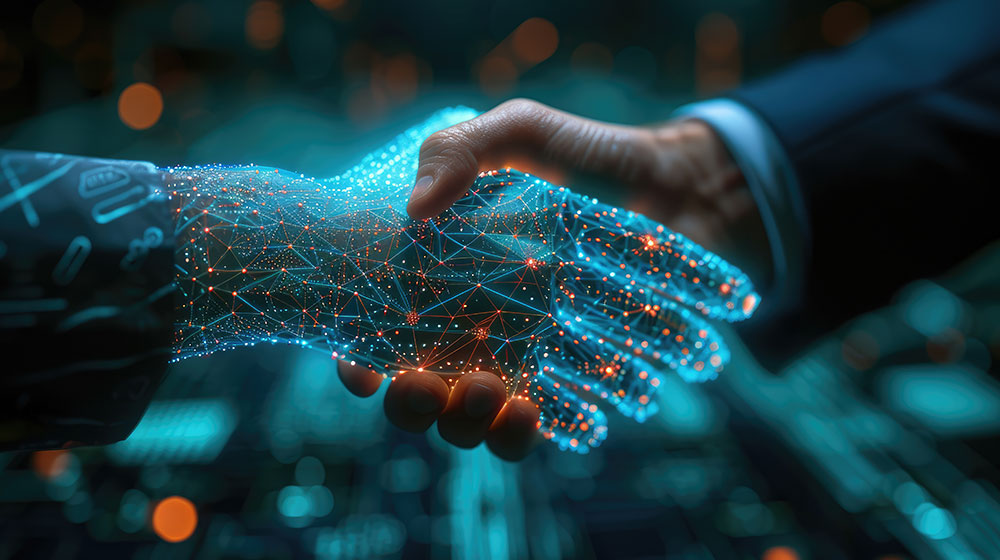Business has changed since our global pandemic, an outbreak that spared no nation or enterprise. We see it in how we plan, produce, market, sell and deliver. No industry has been unscathed. No sector untouched.
Some covid-influence implications have been short-lived; others ongoing and many changes permanent.
Many of said changes have been to the betterment of business and humanity, the rest not so much. By and large, we have become more isolated and cautious about interactions with our fellow human.
The same is true in business. Connecting with individuals within any organization is increasingly difficult as we lean on voice mail, text, email, and web-based platforms to manage costs and limit exposure to the consuming public, our customers. The technology has also facilitated the work from home movement.
Understandably, automation in every element of our economy gained momentum during the Covid years. But in the pursuit of efficiency and effectiveness, many companies have become faceless entities. We rely on technology to maintain relationships with everyone in our ecosystems, from suppliers of raw materials to the end user.
The Mixed Impact of Automation
Clearly much of the advancement of technology, particularly in sales and marketing have made efforts more measurable and efficient. Customers overwhelmingly approve, with studies showing that more than 90 percent of customers say they are more like to make repeat purchases with companies that offer superior customer service.
Cornerstones to customer service excellence are timeliness and problem solving. More than 35 percent of those studied describe a favorable customer service as one that resolves their issues completely and on time.
Tools like email automation, chatbots, self-service kiosks, and interactive voice response have developed keen personalization assets. People can immediately feel seen, even by technology. But those tools are not the end-all in landing new customers and nurturing them into repeat buyers.
And when web content, outbound messaging and inbound greetings aren’t kept current and vibrant, today’s sophisticated customers are well aware of stale and lazy efforts, begging the question: “How then will I be treated as a customer?”
In short, automation in the customer experience isn’t all bots and butterflies. Automation still struggles to solve complex queries; to keep content up to date; to overcome downtime; and to manifest empathy (or other similar human soft skills). Further, many privacy concerns create obstacles to customer adoption. People are wary of giving too much information to computers.
Clarifying long-term privacy liabilities and security complexities are a work in progress. The consuming public, and ultimately the courts, will sort out these intricate matters for those who use such tools for front end customer interaction and outbound marketing.
Shortcomings Spur Customer Frustration
Clients’ dissatisfaction amplifies when they’re caught in an endless circuit of phone prompts, the vacuous netherworld of unanswered emails or automated replies online and on the phone.
And pity the poor agent who ultimately encounters someone who’s successfully (?) navigated the labyrinth of automated obstacles to solve what may have been a simple problem initially.
Ultimately, business must ask itself, is automation improving the customer experience and can that experience be quantified?
The advantages of automation are many, including leveraging people more strategically and effectively; reducing labor costs; increasing accuracy, particularly in many tedious chores; 24/7 accessibility and more.
And when it works, it can even increase front-line employee satisfaction – that customer service agent is more effective when her customer’s issue is resolved even before she personally speaks to the customer.
Blend Humans with Automation
Clearly, the answer is balance.
Automation should target those tasks that can be successfully delegated to machines, even machine learning. When it is used to complement the human role in the customer experience, the results can be exponential, a synergy between qualitative and quantifiable sums.
Tesla CEO Elon Musk declared in a now-famous 2018 tweet, “Humans are underrated.” In short, he experienced a jump in productivity at Tesla when he reduced his factory’s reliance on robots, evolving to the effectiveness of human-robot coupling.
At that time, his was widely regarded as one of the most robotics-driven production plants in the world. But complex networks of conveyor belts, limitations of robots to repetitive chores.and more, necessitated a change. Today co-bots and flex cells leverage the benefits of automation and human interaction for the EV leader.
The same can be accomplished in the worlds of personal marketing and customer service.
When empathy, complex problem solving or unique product knowledge, for example, are required, efficiently elevating these issues to a human enhances the relationship with the customer. And for those carefully delving into the unknowns of machine learning, these issues will be even more efficiently resolved in the near future.
Automation, much like Covid itself, is not going away. Winning businesses will figure out how to best leverage its advantages with the unique contributions that only humans can make.
Profile by Design can help assess the tools and implications humans and automation offer your business. Contact us today. You’ll get to speak to a fellow human being.

